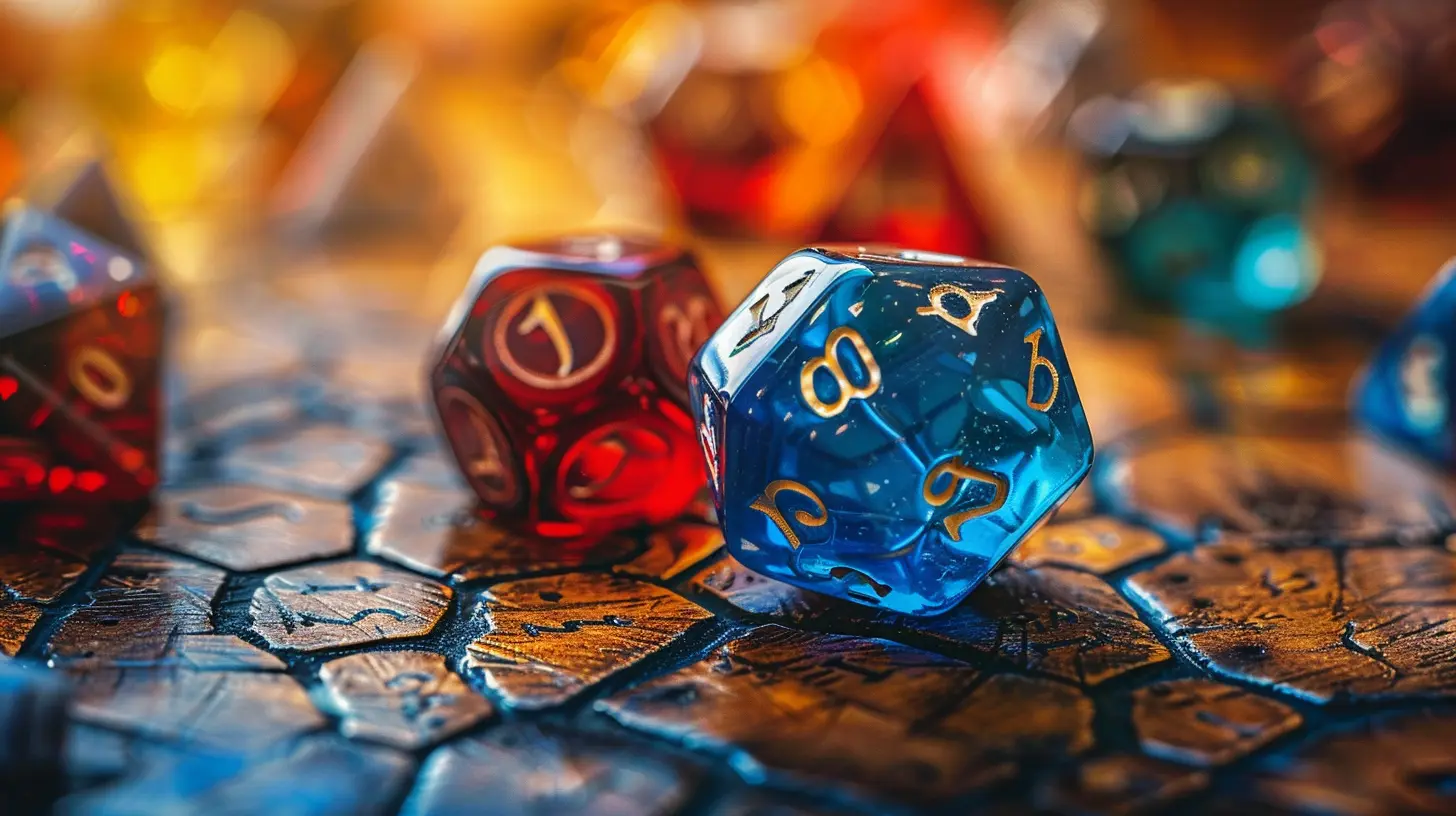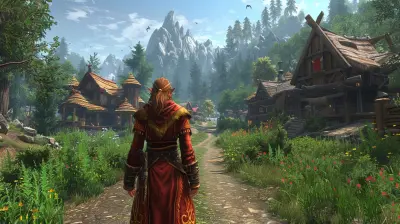How to Balance Games Without Nerfing the Fun
18 November 2025
Game balancing. Just saying the words might make some developers groan and players roll their eyes. If you've ever been part of an intense online match where one weapon rules all, or played a strategy game where one faction dominates, you know how crucial balance is. But here's the kicker: balance doesn't mean sucking the soul out of the game. It doesn’t mean nerfing every OP feature until it’s as dull as soggy bread.
So how do you strike the perfect balance without turning your game into a bland mess? Let’s dive deep into how to balance games without nerfing the fun.
🎮 What Does "Balance" Even Mean in Games?
Before we get too deep, let’s define what we’re actually talking about."Game balance" refers to the state where no single element—like a character, weapon, spell, or strategy—dominates all others. Ideally, players win based on skill, not because they picked the most broken loadout.
But balance isn’t about making everything equal. It’s about giving players viable choices. In many cases, imbalance adds flavor to gameplay—as long as it doesn’t completely squash other options.
Think of it like a buffet. Not every dish is your favorite, but every dish should be worth a try.
🤔 Why Over-Nerfing Kills the Fun
Ever had a favorite character or strategy nerfed into the ground? Annoying, right?Here’s the thing—over-nerfing is a big red flag. It doesn’t just make a game fair; it makes it boring. Players don’t want watered-down mechanics—they want to feel powerful and clever.
When developers go too far trying to "fix" something, they often break what made it enjoyable in the first place. That’s how you lose players.
Balance shouldn't feel like punishment. It should feel like evolution.
🛠️ The Right Way to Approach Game Balancing
Now that we've thrown nerf-hammers out the window, here’s how to keep your game tight and competitive—without sacrificing the fun.1. Start With a Clear Vision
Before you even write a line of code, know what kind of experience you’re building.Do you want fast-paced, chaotic fun like in Overwatch? Tactical positioning like XCOM? Raw survival like Dark Souls? Your vision should shape how you approach balance.
Without a clear goal, you’ll just slap on changes hoping something sticks. Spoiler: it won't.
Ask yourself:
- What makes this game fun?
- What kind of decision-making do we want to encourage?
- What’s the ideal skill ceiling and floor?
Balancing is easier when you have a compass.
2. Avoid Knee-Jerk Reactions to Data
Yes, analytics are gold. But never balance your game only based on win rates or pick rates. Those numbers don’t always tell the whole story.Let’s say a character has a high win rate. That doesn’t mean it’s overpowered. Maybe only skilled players use it. Or maybe there's a new strategy the meta hasn't discovered yet.
Use data to raise questions, not make judgments. Back it up with:
- Playtesting
- Community feedback
- Contextual insights
This isn’t science vs. art. It’s both.
3. Buff, Don’t Just Nerf
Here’s an idea: instead of nerfing the strong, why not buff the weak?Nerfs can feel like punishment. But buffs? Those feel like a gift.
By lifting underpowered options rather than cutting down overpowered ones, you give players more ways to play. Everyone wins. Literally.
It’s like tuning a band. If the guitarist is too loud, maybe the answer isn’t to turn him down—maybe the drummer and keyboardist need to crank it up.
4. Introduce Counters, Not Clones
Sometimes a character or weapon seems busted because nothing counters it.Rather than nerfing it to uselessness, consider introducing soft or hard counters.
For example:
- A super agile character might be vulnerable to traps or AoE damage
- An OP sniper could get countered by a stealthy flanker
- A dominant spell can be nullified by a cooldown reset mechanic
Counters create dynamic gameplay and give players interesting decisions to make. And isn't that the point?
5. Contextual Diversity > Perfect Symmetry
Let’s talk about asymmetry—a fancy word for “stuff isn’t all the same.”The best games often give you a bunch of diverse tools that excel in different situations. Diversity keeps things spicy. Symmetry? That’s just samey and dull.
Instead of trying to balance everything 1:1, embrace different strengths and weaknesses. Not every character needs to deal the same damage or move at the same speed.
Think of Street Fighter, StarCraft, or League of Legends. These games thrive on wildly different playstyles—and they balance through situational strength.
6. Create Rock-Paper-Scissors Dynamics
This is one of the oldest tricks in the book, and it still works like a charm.Design your game so that no single strategy rules them all. Every strength should come with a weakness. And every weakness should have a counter.
It’s a simple rule: if something has no counter, it’s overpowered. If everything beats it, it’s underpowered.
Rock beats scissors, scissors beat paper, paper beats rock. Keep that triangle spinning.
7. Scale Power With Risk
If you’re going to allow powerful mechanics, at least make them risky.A glass cannon character that melts enemies should be easy to kill. A beastly spell should have a long cooldown or be hard to land. A powerful weapon should require rare ammo.
When players weigh risk vs. reward, you open the door for unique styles and epic moments—without making anything broken.
High risk, high reward = high fun.
8. Listen to the Community—But Don’t Panic
Your players are your best beta testers. They’ll find exploits, metas, and loopholes faster than you can say “patch notes.”Engage with them. Read the forums. Watch streams. But remember—players can be loud, dramatic, and more than a little biased.
If everyone’s crying “NERF XYZ,” dig deeper. Is it really broken? Or is it just annoying to play against?
Take feedback seriously, but don’t treat Reddit like a balance bible.
9. Use Temporary Modes to Experiment
Not sure if a change will break the game or make it better? Test it out.Rotating game modes or test servers are perfect sandboxes to try new balance ideas without jumping off a cliff in live environments.
You can:
- Change cooldowns
- Swap damage values
- Try new abilities
- Run mirror matches
It’s like testing new spice mixes before hitting the dinner rush. Way safer.
10. Understand Player Psychology
This might sound fluffy, but it's critical. Players don’t always judge balance based on numbers. They judge it based on how it feels.A weapon that "feels" weak—even if it does okay damage—won’t see play. A character who “feels” unkillable might cause rage quits even if their win rate is low.
Good balance isn’t just about math. It’s about perception. Trust your gut, your players’ feedback, and the vibe check.
💬 Real Talk: You Can’t Please Everyone
Let’s be honest. No matter what you do, someone’s going to be upset.You nerf a fan-favorite? Rage.
You buff someone’s rival? More rage.
The trick is to make sure that as a whole, your game moves in a positive direction. Progress over perfection.
Your goal isn’t to remove fun. It’s to guide it.
🧠 Final Thoughts: Balancing is Craft, Not Chore
Balancing games isn’t about removing power. It’s about shaping it. Like a sculptor chiseling stone—not shattering it.Focus on variety, strategy, and meaningful choice. Don't just take things away; add compelling alternatives. Let players feel smart, not restricted.
And most importantly? Keep the fun alive. Because at the end of the day, what good is a perfectly balanced game if no one wants to play it?
✅ TL;DR: How to Balance Without Killing the Vibe
- Balance is about viable choices, not uniformity- Don’t nerf too much—consider buffing instead
- Introduce counters, add risk, and embrace asymmetry
- Use player feedback wisely, not reactively
- Test changes in safe zones before pushing them live
- Focus on both stats and feel
- Keep the core fun intact—always
all images in this post were generated using AI tools
Category:
Game BalancingAuthor:

Pascal Jennings

